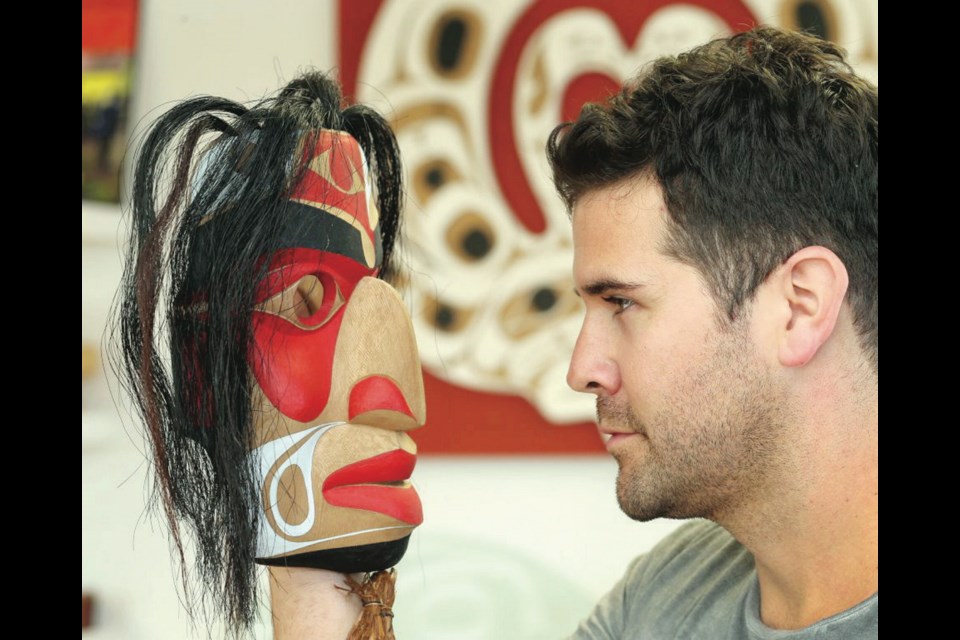British Columbia’s nine official symbols were chosen to highlight unique elements of the province, but many of the emblems face threats from nature and humans that could jeopardize their future.
Disease has decimated the Pacific dogwood on Vancouver Island. Western red cedars in the capital region have dwindled as a result of construction and climate change. In 2006, the Committee on the Status of Endangered Wildlife in Canada declared the pacific salmon an endagered species, later revising its stance, though salmon stocks still need help to grow. The declining salmon stocks as well as roving grizzly bears threaten the spirit bear.
“Some symbols, I understand with the passage of time, may have challenges in the environment and we have to continue to work toward a strong diversity throughout our province,” said Norm Letnick, the parliamentary secretary for Intergovernmental Relations — the government branch that oversees the symbols.
The province boasts nine official symbols: the provincial flag, the coat of arms, Pacific dogwood, jade, the Stellar’s jay, western red cedar, the spirit bear, the official tartan and, the most recent addition, Pacific salmon.
Letnick, the former minister of agriculture who was involved in the decision to protect the Pacific salmon, said he recognized the need to preserve the symbols.
It’s not all bad news for the province’s emblems. The Steller's jay has flourished in urban neighbourhoods, the jade business is booming and the tartan is becoming more popular in the capital region.
Coat of arms (adopted 1895) and provincial flag (adopted 1960):
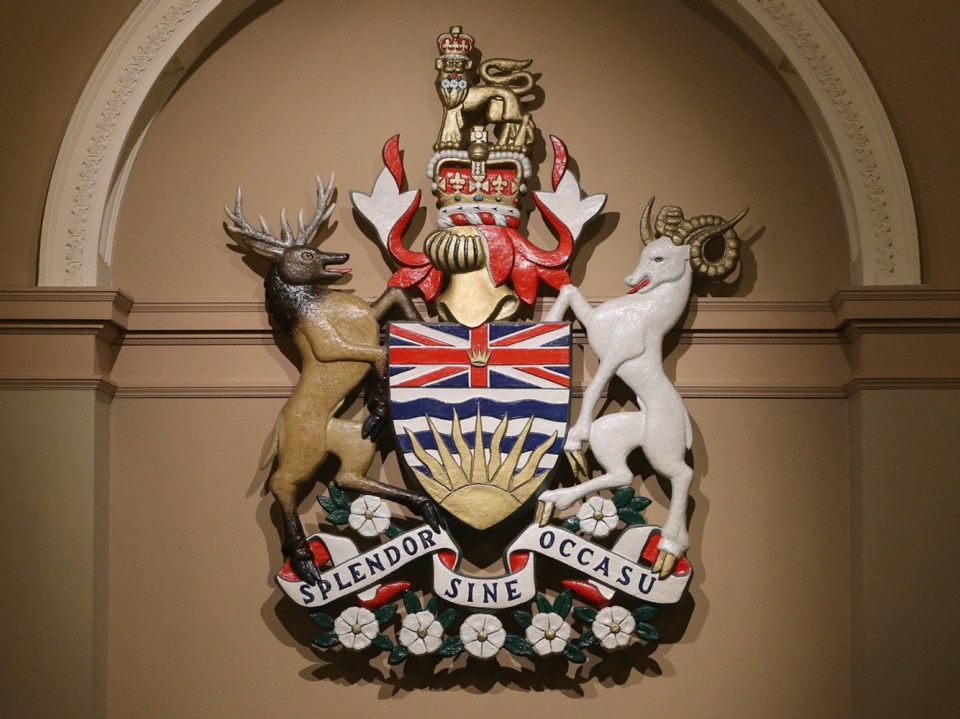
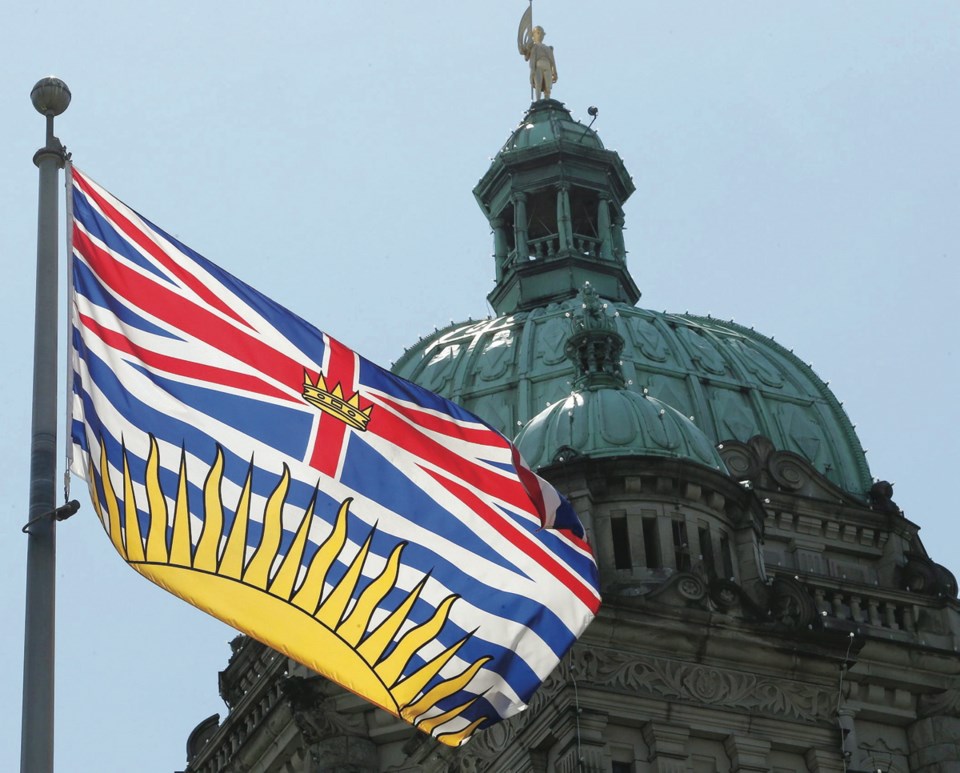
British Columbia's first crest was intended to immortalize the importance and power of the British Empire. The sun, with the ocean in the background, was a reminder that the sun never set on the British Empire. It was designed by Canon Arthur Beanlands, a Victoria resident, in 1895. The motto on the modern version of the coat of arms, Splendor Sine Occasu, means splendor without diminishment. The crest is bordered by an elk and a bighorn sheep, with the elk representing Vancouver Island.
The coat of arms served as the basis for a B.C. flag — known as an armorial banner and featuring the sun and Union flag — that was first used in London, likely around the time of King George V’s coronation in 1911. But there is no evidence that it was ever used by officials within the province, says Alistair B. Fraser, a retired professor who has written extensively about B.C.’s flag.
The official flag was not adopted by the province until 1960, though some some mistakenly believe it’s been around a lot longer.
“That flag quickly became woven indelibly into the fabric of the province,” Fraser writes in a B.C. Historical Federation paper about the B.C. flag.
He points to the 1985 Genie-award-winning movie My American Cousin, which does a good job of capturing the Okanagan in the late 1950s, including fashion, technology, music and attitudes.
“What this careful reconstruction of an era did not get right though, was the flag,” Fraser writes. “Set in the summer of 1959, the movie shows the flag of British Columbia flying in Penticton. Not only was this a year before it was approved, it was well before anyone thought this might be the form it would take. While no more than a peccadillo, this cinematic error hints at the extent to which the flag had become a part of the provincial fabric only a quarter century after its adoption.”
Official Flower: Pacific dogwood
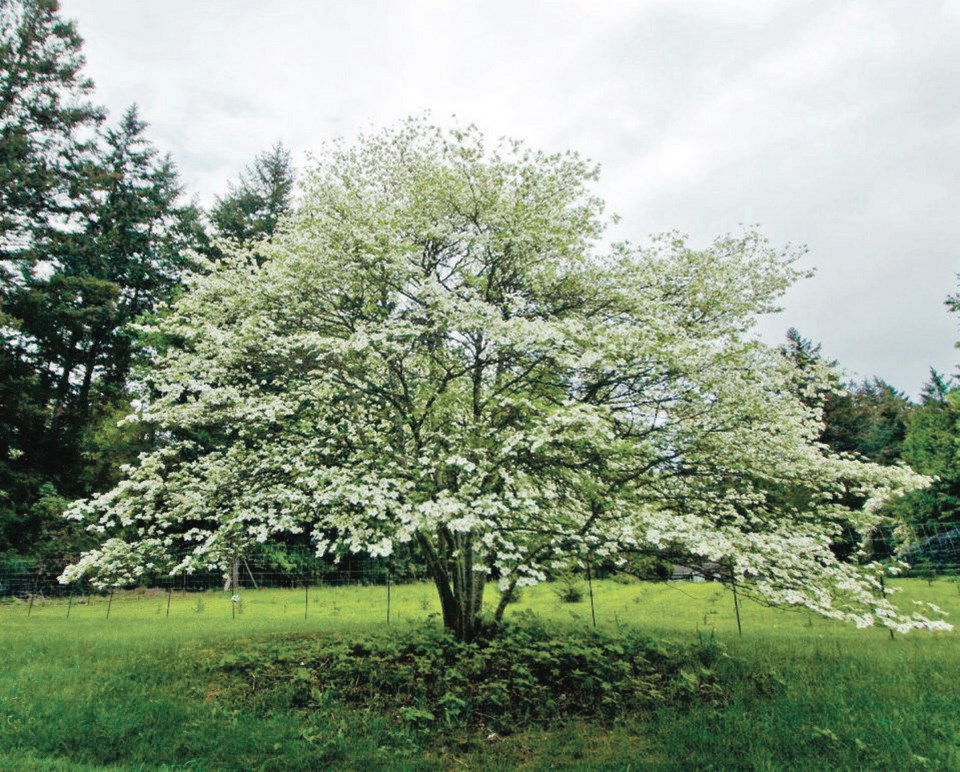
Adopted: 1956
British Columbia's provincial flower isn't really a flower — it's a tree.
The Pacific dogwood only grows in the southwest corner of B.C., making Victoria and Vancouver Island one of its remaining homes.
“It's a spectacular tree. It recalls our early history, at least in southwestern British Columbia, as a symbol,” said Richard Hebda, a curator of botany and earth history at the Royal B.C. Museum.
The dogwood, rhododendron and trillium were protected under a 1931 provincial act, but that ended when the provincial government repealed the law in April 2002.
Kevin Falcon, the minister of state for deregulation at the time, said there was no shortage of rhodos or trilliums in B.C. and saw no need to continue the protection for the three plants.
Not yet an endangered species, the dogwood no longer flourishes as prominently as it once did on the West Coast. Dogwood anthracnose, a disease infects the leaves and eventually chokes the tree, has decimated the local population.
Local plant enthusiasts are upset the municipal and provincial government have failed to step in to protect the Pacific dogwood.
“There's no research or money coming in to help [the tree]. We're letting them die,” said Donald Bottrell, the owner of Dogwood Tree Services and an arborist for 30 years.
Scientists have created a hybrid plant dubbed Eddie's White Wonder, which combines two types of dogwood, as a solution but the tree is still affected by the disease.
Hebda hopes residents understand the plight of the tree.
“It's very attractive, and a tree in full bloom is absolutely spectacular. But we've lost a lot of that spectacular heritage,” Hebda said. “I hope more residents start planting them.”
Official gemstone: Jade
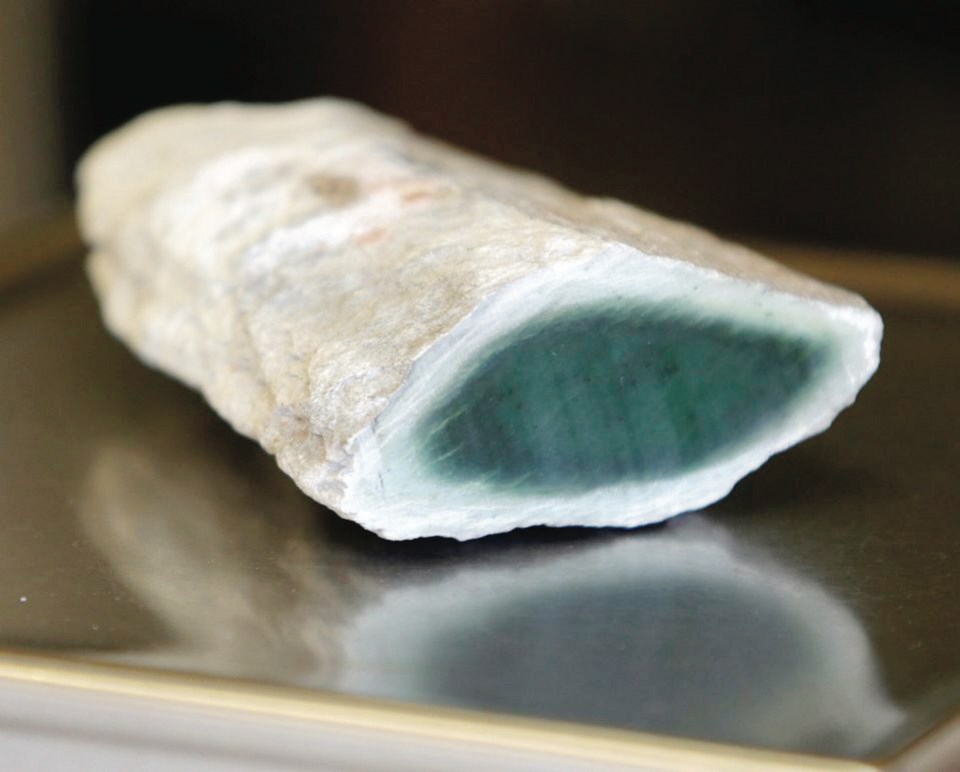
Adopted:1968
The bright green gemstone found in British Columbia has long been coveted around the world, but recent demand from China has cast a new light on jade.
“It's booming. There's a jade rush on right now,” said Kirk Makepeace, the president of Jade West Group, one of the largest jade companies in B.C.
The 2008 Beijing Olympics brought a greater interest in the gemstone when it was used in the medal designs.
According to the office of the premier, British Columbia is home to half of the world’s jade resources.
There are two types of jade: nephrite and jadeite, but nephrite is the only type found in Canada.
The gem is primarily mined in northern B.C. but some rocks have been located in southern stretches of the Fraser River.
Tourists often look for the gemstone in Victoria shops.
“Jade has that mystique and the name from ancient times that helps it remain so popular,” said Gerry Vaulkhard, owner of Rockhound Shop, which caters to rock and mineral enthusiasts.
Local carvers and rock enthusiasts with the Victoria Lapidary and Mineral Society are also keen to work with the B.C. gem.
“If we talk abut copper, there's many provinces that have copper. If we talk about silver and gold, other provinces have it, [but] you won't find jade anywhere else,” said Gilles Lebrun, the field trip director for the society.
Official fish: Pacific salmon
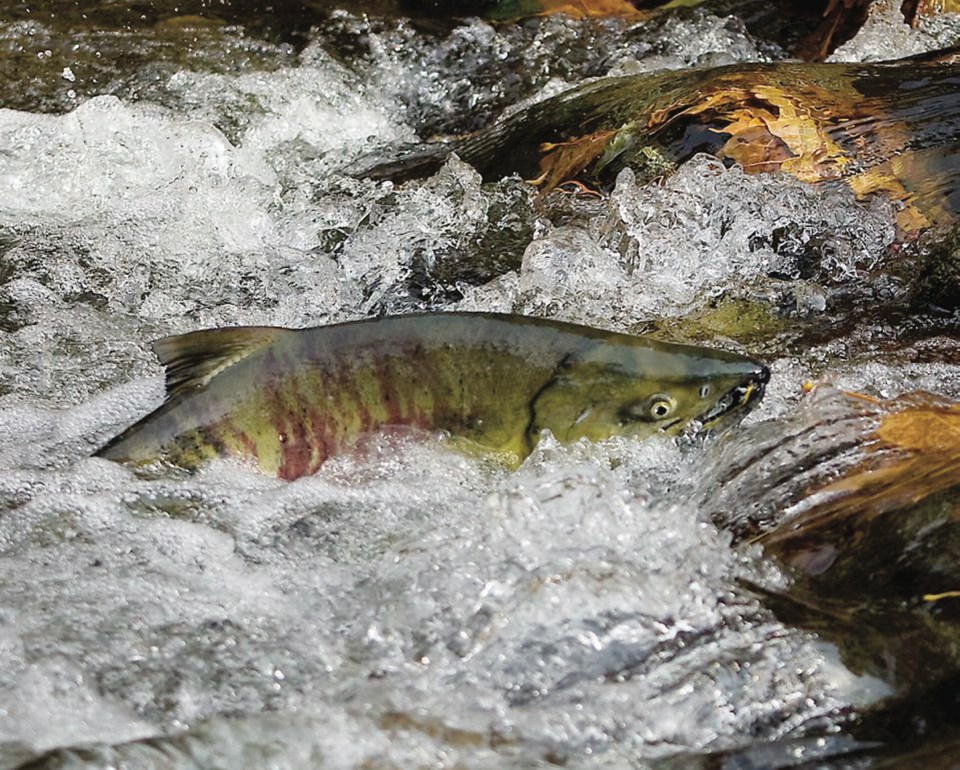
Adopted: 2013
The newest addition to the provincial symbols, the Pacific salmon has been a staple on the West Coast for hundreds of years.
“Salmon are almost a spiritual thing. It's part of the West Coast experience,” said Peter McCully, the technical adviser to the Goldstream fish hatchery.
The Pacific salmon was officially adopted as a symbol in April 2013, after a push by the Pacific Salmon Foundation.
Founded in 1987, the foundation works to protect and rebuild the wild Pacific salmon stocks along the B.C. coastline.
“We have so many rivers and streams, we have such a beautiful wilderness that is our home, and salmon are so important across the province,” said Michael Meneer, vice-president of communications for the foundation. “We call Pacific salmon a keystone species for our environment.”
The designation extends to the sockeye, chinook, coho, pink, and chum salmon, as well as the steelhead trout and cutthroat trout.
The trout are part of the salmon family and were included to ensure all B.C. salmon were represented in the symbol.
Meneer estimates about 190 different plants and animals across the province rely on salmon for nutrients.
The foundation gets about $1 million a year, collected from the purchase of sustainable fishing licences, to help rebuild stream habitats.
The biggest population of salmon in the capital region can be found in the Goldstream River. About 40,000 chum salmon travelled through the river last year.
Tom Davis, owner of Rhys Davis, a company that designs fishing tackle, has been fishing for more than 50 years and hopes the adoption of the symbol encourages more local interest in the fish.
“If we lose them, it would be a devastating loss for our entire province,” he said.
Official bird: Steller's jay
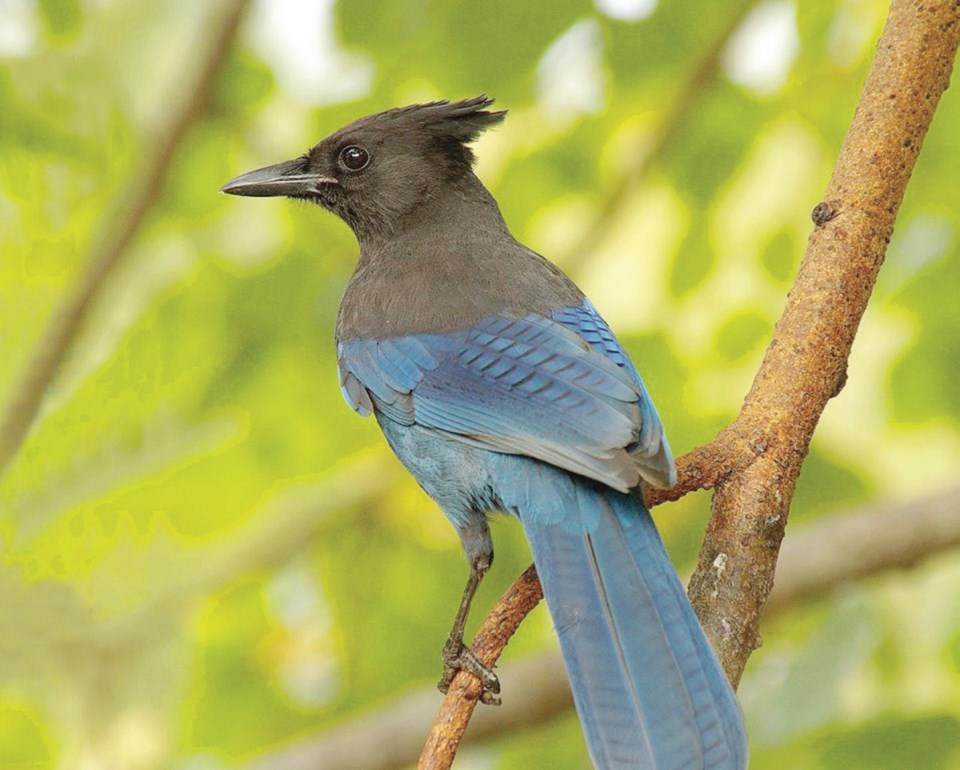
Adopted: 1987
Look in your backyard and chances are you'll spot a Steller's jay, with its distinctive blue feathers, on a tree branch or in a birdbath.
The jay was the only symbol to be adopted after a public vote. It beat out other candidates to snag the title of B.C.'s bird in 1987, after a provincewide mail-in vote held by the Ministry of Environment and Parks.
About 85,000 residents took part, with the jay triumphing with 21,261 votes — 2,000 more than the second placed peregrine falcon.
“They really have attitude. They're bright and noisy birds,” said George Clulow, the president of the B.C. field ornIthologists association.
The vote was held to celebrate the centennial of wildlife conservation in Canada.
Named after George Steller, a German naturalist, the bird can be found throughout British Columbia and usually flocks to forests with nearby residential areas.
Birdwatchers look for Steller's jays in an effort to spot rare grey owls, due to the jays’ tendency to mob grey owls.
While they migrate for summer to places with higher elevation, such as the Malahat, the jays are found throughout Victoria and the capital region during the winter.
“I like them as a symbol. They’re an attractive bird and I don’t get to see them that often and it’s always a treat when I do,” said Ann Nightingale, a co-president of the Rocky Point Bird Observatory.
Official tree: Western red cedar
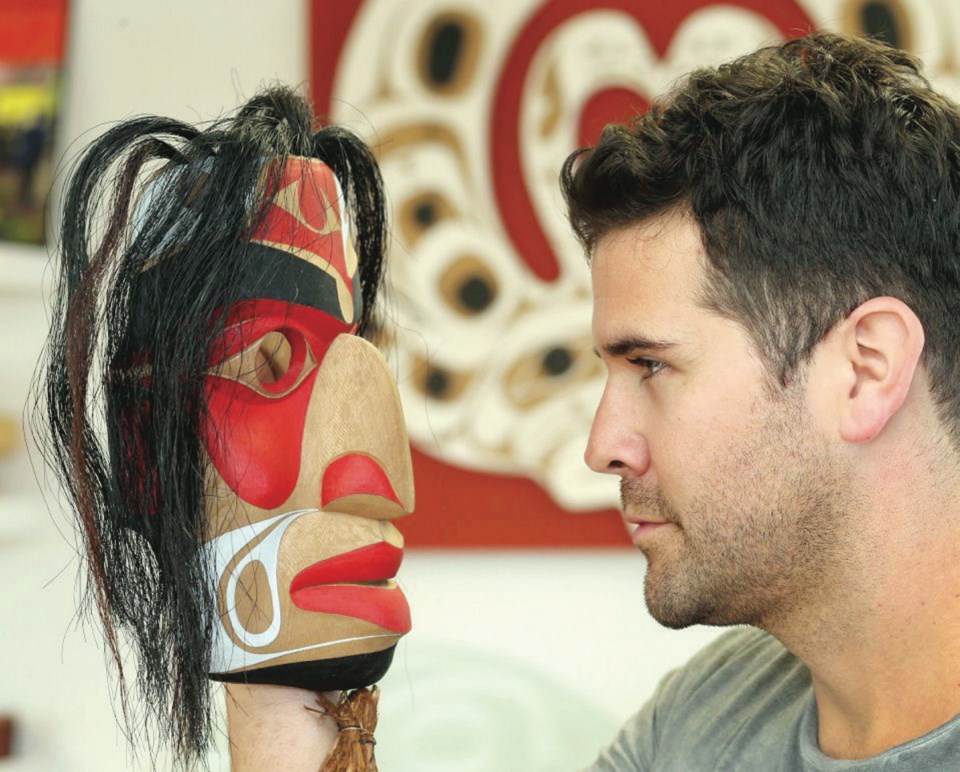
Adopted: 1988
Rande Cook stands in his Victoria studio pointing out items made of western red cedar: boxes, masks, hats and even skirts.
A coniferous tree, the cedar primarily grows along the west coast of British Columbia and can be found throughout Vancouver Island.
The tree is key to many First Nations bands across Vancouver Island, including Cook's Kwakwaka'wakw tribe, for its many uses in their culture.
“It's what we call our tree of life,” the 36-year-old artist said. “It is our greatest tree because we used it for pretty much everything. It's just the perfect wood.”
The cedar is one of the easiest trees to carve, with soft bark that can be woven.
The tree was chosen as B.C.’s official tree in 1988 to celebrate the 75th anniversary of B.C. Forest Services.
While trees such as the Pacific dogwood are under attack from diseases, the cedar is threatened by urban development and climate change.
A 2007 study by the University of B.C. determined that some trees on the Island could withstand climate change, but low elevation sites would see a decline.
Ryan Senechal, a local arborist, said the large height and root system of the tree deters residents from planting them on their property.
Since the 1980s, Senechal estimates 20 per cent of red cedars in Saanich have been destroyed or lost because of construction.
“It's just such a character piece of our landscape and it's worth preserving,” Senechal said. “And we have the power to affect the decline.”
Official mammal: Spirit bear
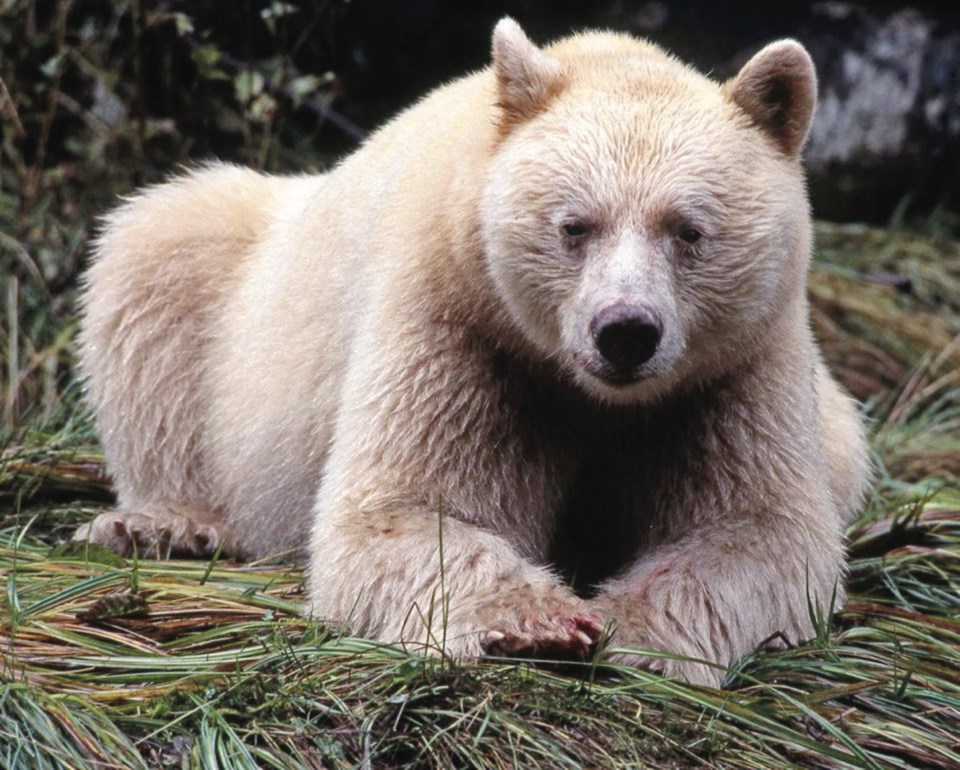
Adopted: 2006
For years, the reclusive spirit bear was once thought to be a completely different species of bear.
Named after Francis Kermode, a curator at the Royal British Columbia Museum in the early 20th century, the first spirit bear to be held in captivity was in a small cage in Beacon Hill Park from 1924 to 1948.
In the Great Bear Rainforest, which is on B.C.’s central and north coasts and contains one quarter of the world's remaining intact temperate rainforest, the black bears are collectively referred to as Kermode bears. About one in 10 of the bears have a distinctive white coat and are known as white Kermodes or spirit bears. Parents and cubs may be different colours, depending on genetics.
“There’s something inspiring about seeing this white bear with the green forest in the background,” said Wayne McCrory, a bear biologist with Valhalla Wilderness Society. The bear, he said, symbolizes the diversity of life and creatures in the Great Bear rainforest, similar to that of the Galapagos Islands.The society is pressing the government to protect the bears by preserving their habitat.
McCrory worries about the impact of having the Enbridge pipeline built through the area, but the bears also face a threat from other animals.
Grizzly bears are making their way into the habitat of the Kermodes, killing black bears and stopping Kermode bears from hunting salmon.
The dwindling number of salmon along B.C.'s coast also threatens the bears’ food supply. A University of Victoria researcher warns that if the bears are endangered, it could hurt the growing tourism trade set up to showcase the bears.
“The spirit bears are an economically important resource. To put it bluntly, they’re a part of the inventory for eco-tourism businesses,” said Chris Darimont, a UVic professor who has spent two years studying the bears and their effect on eco-tourism.
Both McCrory and Darimont said they hope the government considers more protection for the bears.
“It's a symbol of evolution and, as stewards of this province, we should protect them,” McCrory said.
Official tartan: Original British Columbia pattern
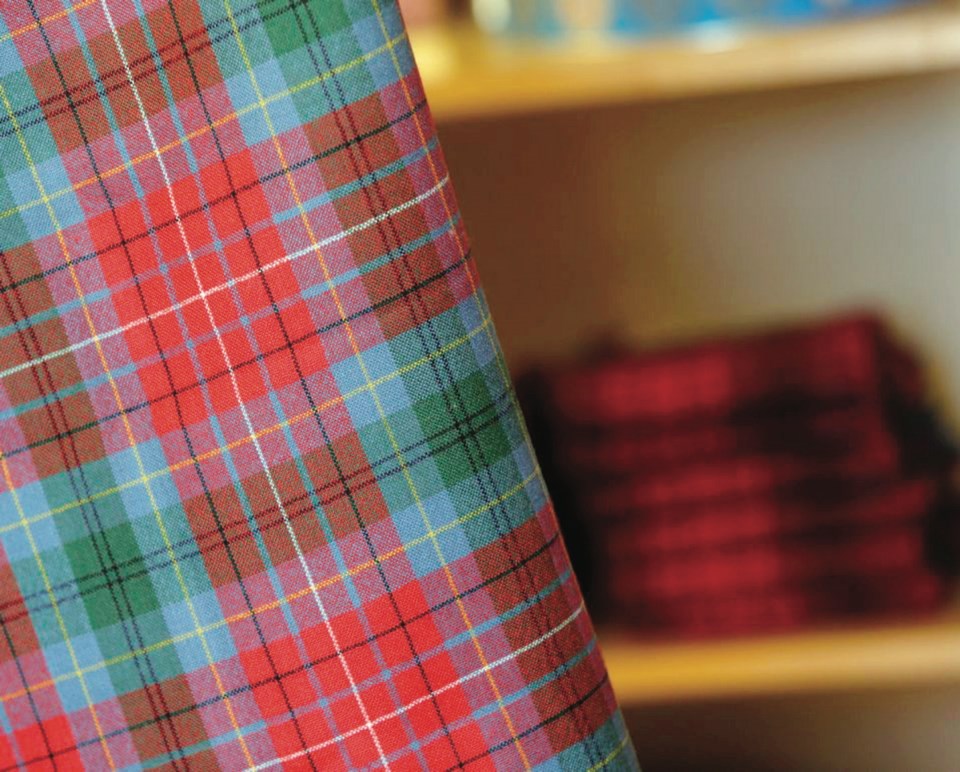
Adopted: 1974
Buried in the Edinburgh office of the Court of the Lord Lyon, the list of official tartans contains many names you would expect: Robertson, Mackay, Donald, McCarthy. It also includes one surprise: British Columbia.
Designed by Victoria resident Earl K. Ward in 1967 for Canada's centential, B.C.’s tartan reflects the province’s ties to Scotland.
New Caledonia (”New Scotland”) was the name explorer Simon Fraser gave in 1806 to a part of the territory that later became British Columbia.
The tartan’s colours incorporate elements from others B.C. symbols — white for the Pacific dogwood, green for the forests, blue for the Pacific Ocean, red for the maple leaf and gold to symbolize the sun and the crown in the provincial flag.
While Victoria has always projected an affinity with Britain, its Scottish connection is keenly celebrated by locals.
“Just look at all the street names that are Scottish,” said Alex Reid, past president of the St. Andrew's and Caledonia Society.Streets such as Caledonia, Yates and Mitchell all share a Scottish heritage.
The society, which helps organize the Victoria Highland Games and Tartan Days, celebrates Victoria’s ties to Scotland.
“It’s interesting to see how great the impact Scots had on building Canada and I think it’s a great symbol to recognize that,” he said.
The Cary Mews tea room on the grounds of Government House is one of two locations — the other being the legislature gift shop — that sells the B.C. tartan.
The tea room, which opened in 2012, sells about 48 tartan shawls and scarves a year, said Jerymy Brownridge, the director of operations. The shawls have become a popular item at the store for both tourists and residents who want a piece of B.C. history, he said.
